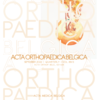Assessment of the endoprosthesis offset in a dysplastic coxarthrosis
hip dysplasia; hip offset; hip endoprosthesis
Published online: Jan 20 2023
Abstract
Incorrectly developed acetabulum and subluxated hip joint may cause many problems for proper implantation of endoprosthesis. The aim of this work is to assess the radiological results of offset restoration and selection of endoprosthesis implant in a dysplastic hip joint. The study group consisted of patients who had a surgery in the period between 2016 and 2018. All of them had a cementless total hip endoprosthesis. The group consisted of 91 patients (96 hip joints), with an average age of 42 years (31-47 years). 55 left and 41 right hip joints. 70 females and 21 males. The control group consisted of patients who were not diagnosed with hip joint dysplasia. The control group consisted of 70 patients (70 hip joints), with an average age of 35 years (19-55 years). 53 females and 17 males. The radiographic assessment included the measuring of medialization and distalization which describe the offset of hip joint. The joint decentration was classified according to Crowe. Based on radiographic measurements we have achieved statistically significant (p<0.05) changes in medialization and distaliza- tion parameters. We have not noticed a statistically significant difference for medialization parameter (p=0.8259) after a surgery when compared to the control group. For all patients we have achieved a restoration of correct offset in the horizontal plane. The main idea behind endoprosthesis in a dysplastic coxarthosis is the implantation of endoprosthesis cup in an anatomically correct location. Small screw- in cup and conical stem offer great possibility of restoring correct offset of a dysplastic hip joint.
